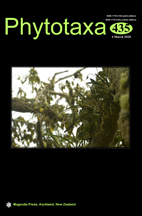Abstract
The taxonomic relation between Oenothera royfraseri and O. turoviensis (sect. Oenothera, subsect. Oenothera; Onagraceae) has remained unresolved. According to the representatives of the so-called American school of taxonomy (W. Dietrich, P.H. Raven, W.L. Wagner) the former name is one of almost 70 synonyms of widely treated O. biennis (AB-II plastome-genome combination) while the latter is a synonym of O. parviflora (BC-IV arrangement). On the other hand, European researchers (K. Rostański, A. Soldano, V. Jehlík) tend to assign both names to one species, under the name O. royfraseri. In order to establish the taxonomic relation of the studied taxa, morphometric comparisons, based on qualitative and quantitative traits, were carried out. The studies included European specimens labelled as O. royfraseri and/or O. turoviensis (with the nomenclatural types of the two names) as well as representatives of the two other species, O. biennis and O. parviflora, which were taken as a background. The performed multivariate statistical analyses (correspondence analysis, principal component analysis, discriminant analysis followed by canonical discriminant analysis) provided strong evidence supporting the American’s hypothesis on separateness of the two species. As it was demonstrated, O. royfraseri and O. turoviensis differ mostly by the sepal tips arrangement, which is considered by American and European researchers as one of the most essential variables in taxa recognition within the group. The obtained results have also indicated that O. royfraseri is distinct from European representatives of O. biennis, which is partially concordant with Rostański’s opinion. The two last-mentioned species can be discriminated by red vs. green papillae, strigillose vs. glandular hair predominance, respectively, as well as by quantitative features of the flowers, which are significantly larger in O. biennis.

